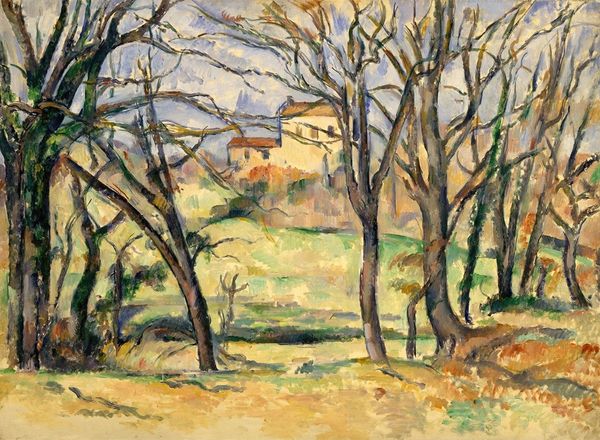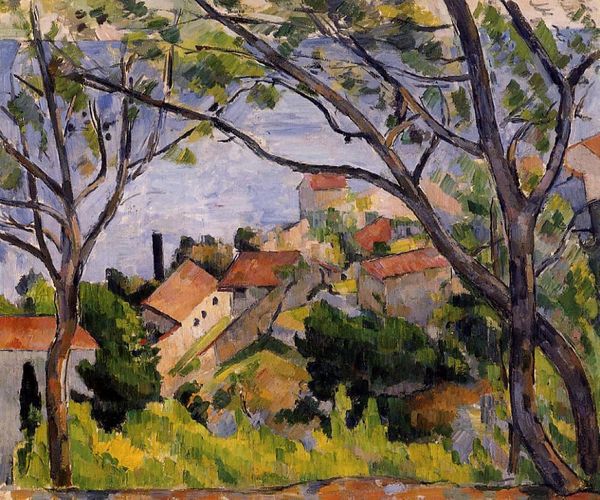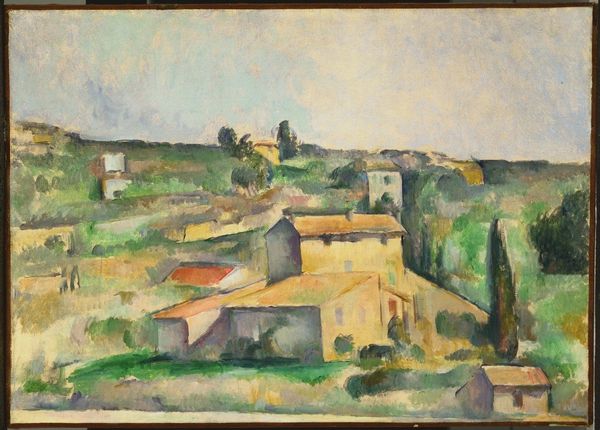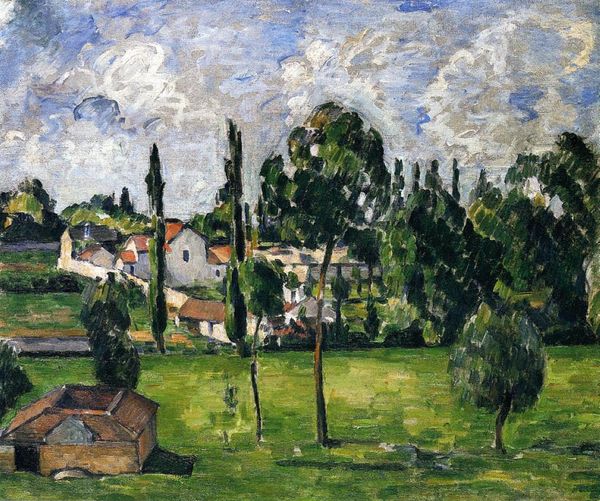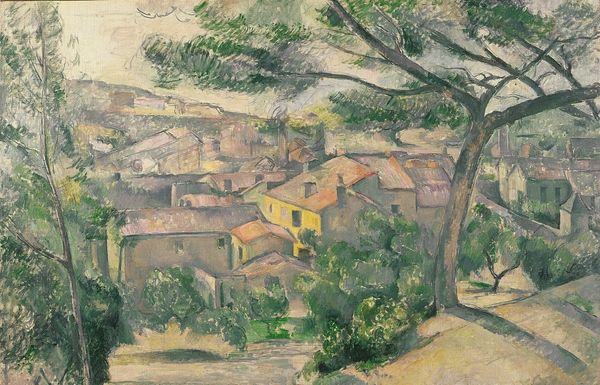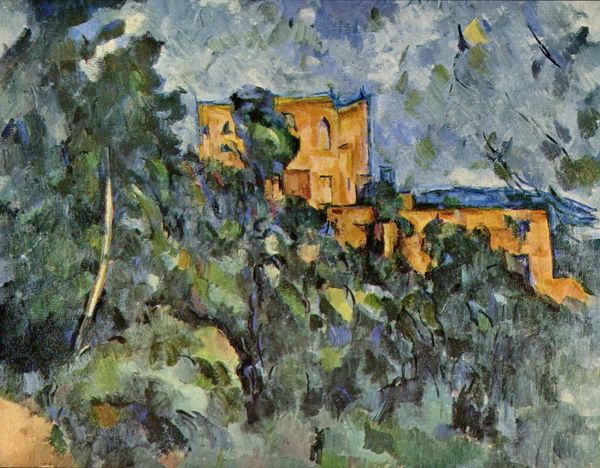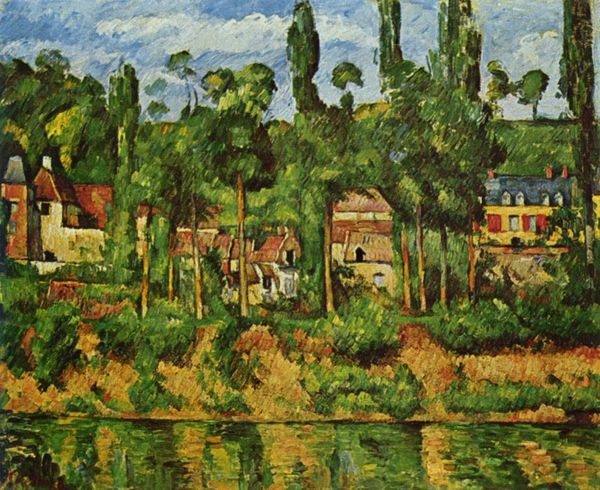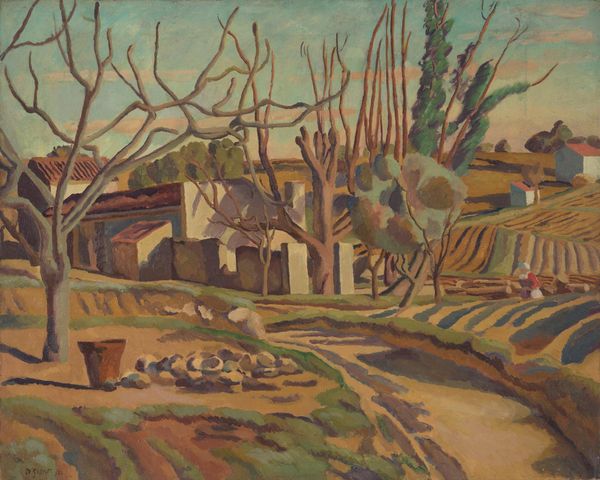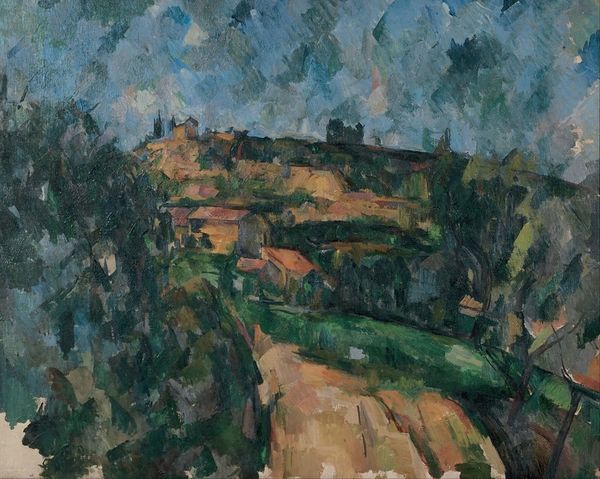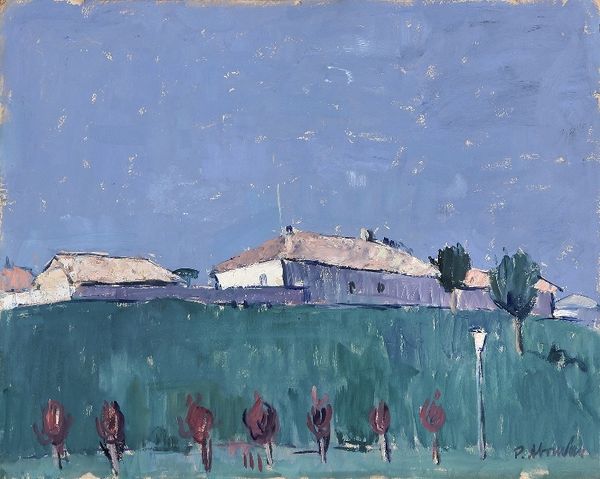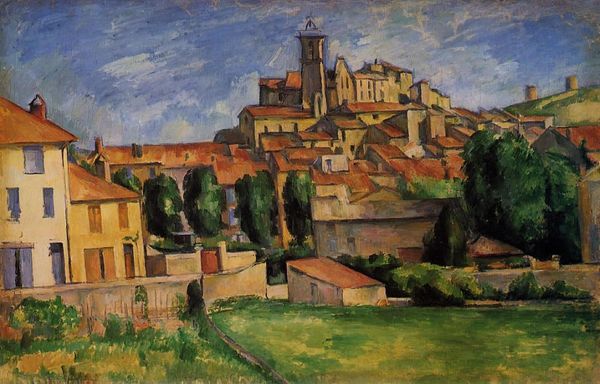
Copyright: Public domain
Paul Cézanne created ‘The Pool at Jas de Bouffan’ with oil on canvas. Notice how the architecture, landscape and water pool are constructed with geometric forms. This gives the painting a unique visual structure. The painting's composition emphasizes a tension between surface and depth. Cézanne uses a grid-like structure of horizontal and vertical lines which flatten the picture plane. Yet, the use of color and perspective creates an illusion of three-dimensional space. The reflections in the pool, for instance, distort the architectural forms, blending the boundary between reality and representation. Cézanne’s technique destabilizes traditional perspective. The painting challenges the viewer's perception, inviting us to question the nature of representation itself. The surface of the canvas becomes a site where form and structure create new ways of seeing, engaging with the very principles of visual understanding.
Comments
No comments
Be the first to comment and join the conversation on the ultimate creative platform.
